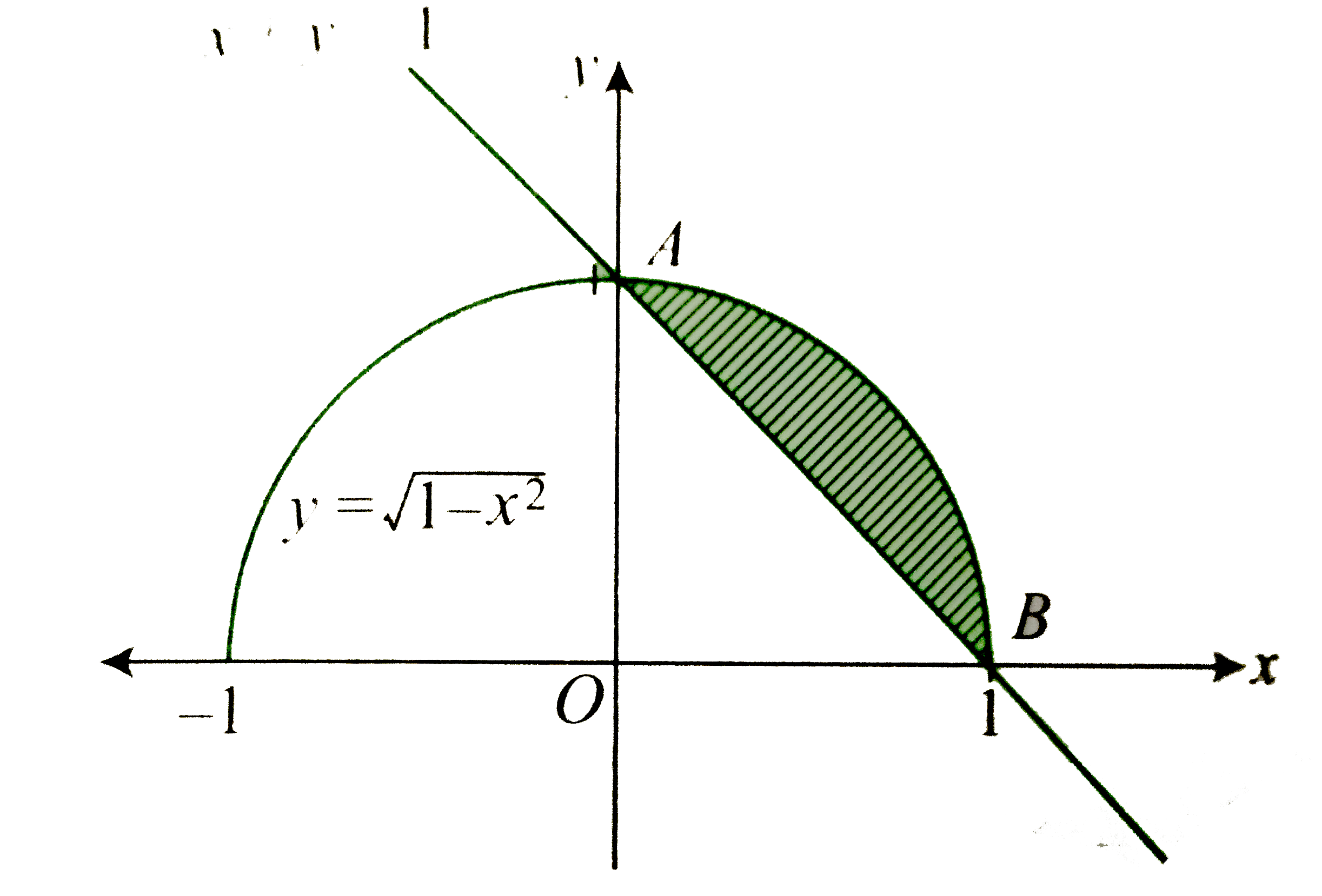Let f:[0,∞)→R be a continuous function such that f(x)=1−2x+∫x0ex−tf(t)dt for all x∈[0,∞). Then, which of the following statements(s) is (are)) TRUE?
A
The curve y=f(x) passes through the point (1,2)
B
The curve y=f(x) passes through the point (2,-1)
C
The area of the region {(x,y)∈[0,1]×R:f(x)≤y≤√1−x2} is π−24
D
The area of the region {(x,y)∈[0,1]×R:f(x)≤y≤√1−x2} is π−14
Video Solution
Text Solution
The correct Answer is:B, C
f(x)=1−2x+x∫0ex−1f(t)dt
⇒ f(x)=1−2x+exx∫0e−tf(t)dt ...(i)
Differentiating w.r.t. x, we get
f'(x)=−2+exe−xf(x)+exx∫0e−tf(t)dt ...(ii)
Subtracting (i) from (ii), we get
f'(x)−f(x)=−2+f(x)−1+2x
⇒ f'(x)−2f(x)=2x−3
This is linear differential equation.
I.F.=e∫−2dx=e−2x
Therefore, solution is
y⋅e−2x=∫(2x−3)e−2xdx+c
⇒ y⋅e−2x=(2x−3)⋅e−2x−2−∫2×e−2x−2dx+c
⇒ y⋅e−2x=−(2x−3)e−2x2−e−2x2+c
⇒ y⋅e−2x=(1−x)e−2x+c
⇒ y=(1−x)+c.e2x ...(iii)
Putting x=0 in (i), we get f(0)=1.
So, from above equation, we have
1=1+c⇒c=0
Now, (iii) reduces to y=1-x, which passes through point (2,-1).
Now,f(x)≤y≤√1−x2
⇒ 1−x≤y≤√1−x2
1−x≤y represents the region above the line 1−x=yandy≤√1−x2 represents the region inside the semicircle (lying above x-axis) x2+y2=1.
So, common region is as the shaded one in the following figure :

Area of the shaded region
=Area of quarter of the circle - Area of triangle OAB
=14×π(1)2−12×1×1=π−24
|
Similar Questions
Knowledge Check
If f(x)=∫x0et2(t−2)(t−3)dt for all x∈(0,∞) , then
Af has a local maximum at x=2Bf is decreasing on (2,3)Cthere exists some c∈(0,∞) such that f(c)=0Df has a local minimum at x=3Let f:R→R be a differentiable function such that f(x)=x2+∫x0e−tf(x−t)dt.
y=f(x) isAinjective but not surjectiveBsurjective but not injectiveCbijectiveDneither injective nor surjectiveLet f:R→R be a differentiable function such that f(x)=x2+∫x0e−tf(x−t)dt.
f(x) increases forAx>1Bx<−2Cx>2Dnone of these
Let f(x) be a differentiable function such that f(x)=x2+∫x0e−tf(x−t)dt then ∫10f(x)dx=
View SolutionLet f(x)=∫x0et.sin(x−t)dtandg(x)=f(x)+f''(x). Which of the following statements are correct ?
View SolutionIf a continuous function f satisfies ∫f(x)0t3dt=x2(1+x) for all x≥0 then f(2)
View Solutionif f be a differentiable function such that f(x)=x2∫x0e−tf(x−t). dt. Then f(x) =
View SolutionLet f:[0,1]→[0,∞] be a continuous function such that ∫10f(x)dx=10. Which of the following statements is NOT necessarily true ?
View Solution
